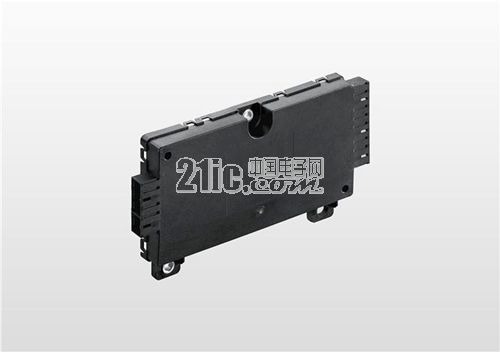On July 21st, 2017, Shanghai – special chemicals company LANXESS and the Hella Hook Group in Lippstadt, Germany, jointly developed a new composite alloy material called Pocan AF4130. The material is used in a housing material that is loaded with a Battery Management Unit (BMU) and a Dual Battery Detection Unit (CMU). Let's take a look at the related content with the car electronics editor.

PBT alloy material achieves new electric vehicle battery parts
The alloy of polybutylene terephthalate (PBT) and acrylonitrile-styrene-acrylate copolymer (ASA) contains 30% glass fiber and a halogen-based flame retardant. “The special advantage of this material is that it has extremely low warpage and shrinkage and high flame retardancy. We believe that this material has great application prospects in precision parts of vehicle batteries.†Marc Marbach, Sales Director of the High Performance Materials (HPM) business unit, said. From the initial conceptual design to the extensive testing, to the final full production it took only two and a half years.
HELLA supplies battery management unit (BMU) and battery detection unit (CMU) to a German automotive battery system manufacturer. These components are very thin and are used in the lithium battery system of a small German car.
Low deviation
The BMU and CMU housings have a large flat surface with complex edges and internal geometry. Thanks to the innovative design, the BMU and CMU housings enable individual parts to be injection molded, saving costs. When the housing is mounted on the PCB, the connector pins cannot be bent. Therefore, the dimensional tolerances between the connector connector and the pin jack must be small. “Our PBT/ASA alloy Pocan AF4130 with excellent dimensional stability can be used here,†Marbach said.
UL 94 5VA- and UL f1 certification
The UL94 fire test results of the American Safety Testing Laboratory show that the material achieves the best V-0 (0.75 mm) rating, which fully meets the requirements of the above-mentioned German small car lithium battery system application. It is UL listed and meets the UL 94 5VA (1.5 mm) flame rating. This material will eventually be used on injection molded parts of flame-retardant housing parts. In addition, it is UL r1 certified for outdoor applications that are resistant to UV and water. “Therefore, our composite alloy materials can also be used on electronic components such as photovoltaic plugs and sockets,†says Marbach.
Low volatility and emissions within the allowable range
The thermal desorption analysis conducted by LANXESS according to VDA 278 (German Automotive Industry Association) shows that the surface of the thermoplastic material is very low. “Therefore, it also meets many automotive applications, such as automotive interior parts that require low volatility and allowable emissions,†Marbach said.
Good resistance to commonly used battery electrolytes
This composite alloy material is highly resistant to media commonly used in automobiles, such as fuels, lubricants, detergents and car care products, as LANXESS specializes in a wide range of media storage test results for Hella. Show. This material meets the LV 124 standard supply specifications recognized by many automotive manufacturers. In addition, this composite alloy material also exhibits good resistance to electrolytes commonly used in lithium batteries. In this regard, we have also carried out load tests in accordance with DIN EN 22088-3. “The samples did not show significant cracks even after 1,000 hours of exposure,†Marbach said.
Comprehensive HiAnt service
LANXESS has provided a lot of support for the development of the shell components. These services are part of the HiAnt Customer Service Pack. For example, HPM advises on optimized component design, providing computer-aided design of all enclosure components and product performance data required for mold flow analysis to meet anticipated load requirements and aid in initial injection molding testing. LANXESS also determined the content of halides in the composite alloy by ion chromatography and tested the odor of VDA 270.
The above is about the introduction of new electric vehicle battery components in automotive electronics - PBT alloy materials. If you want to know more information, please pay more attention, electronic engineering will provide you with more complete, more detailed and updated information.
Mono Solar Panel
Anti-reflective coating: AR used reduces the reflectivity to enhance transmittance.
Tempered Glass: Low Iron and AR coating glass increase the power output and mechanical strength of the solar module. Mechanical load ≥2400Pa, transmittance ≥91.6%
EVA: Transmittance ≥91%, Adhesive Capacity >85%
Cell: 17.9% of high-efficiency solar cells to sure 15.7% module efficiency
Back sheet: Using higher quality back sheet to prevent destroying and water, it`s reflectivity ≥87%, peeling strength ≥ 40N/cm.
Aluminum Frame: Anodized aluminum alloy to effectively improve the corrosion resistance and strength
Mono Cell Solar Panel,Monocrystalline Module,Perc Mono Solar Panel,Monocrystalline Solar Panel Price
Wuxi Sunket New Energy Technology Co.,Ltd , https://www.sunketsolar.com
